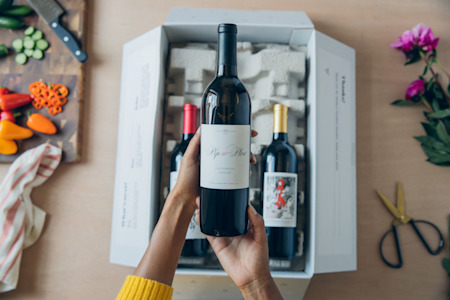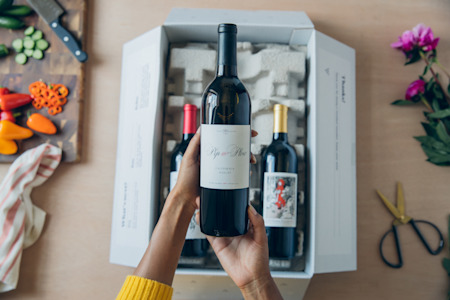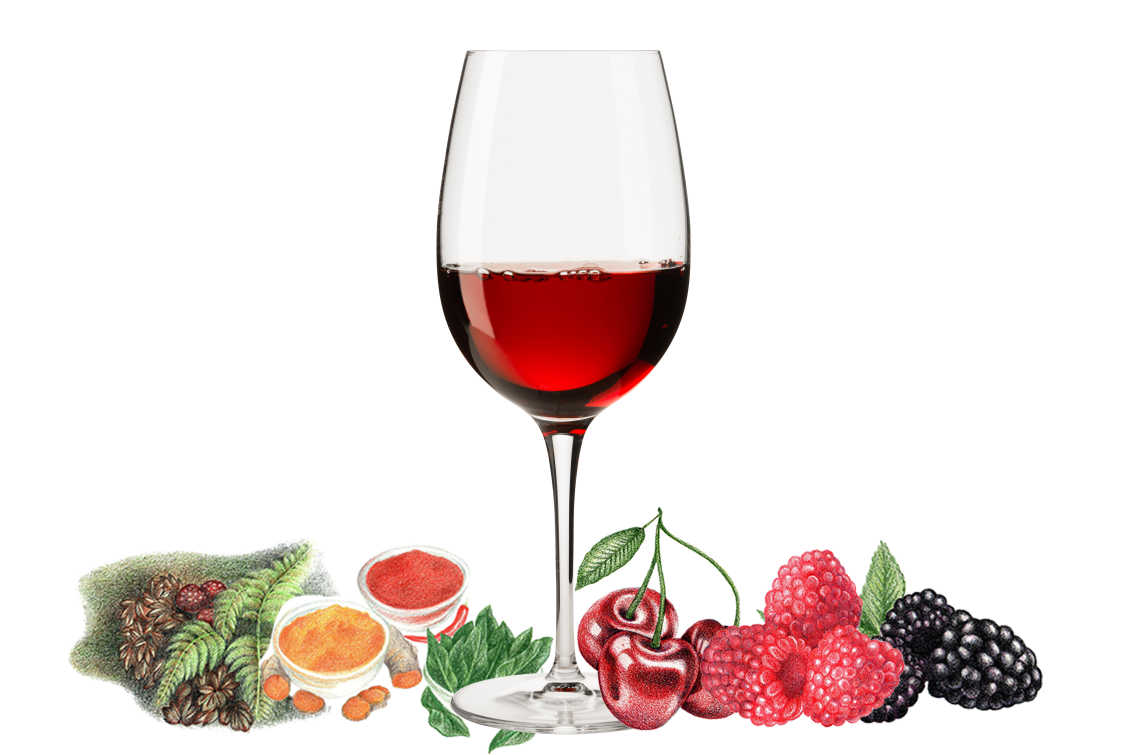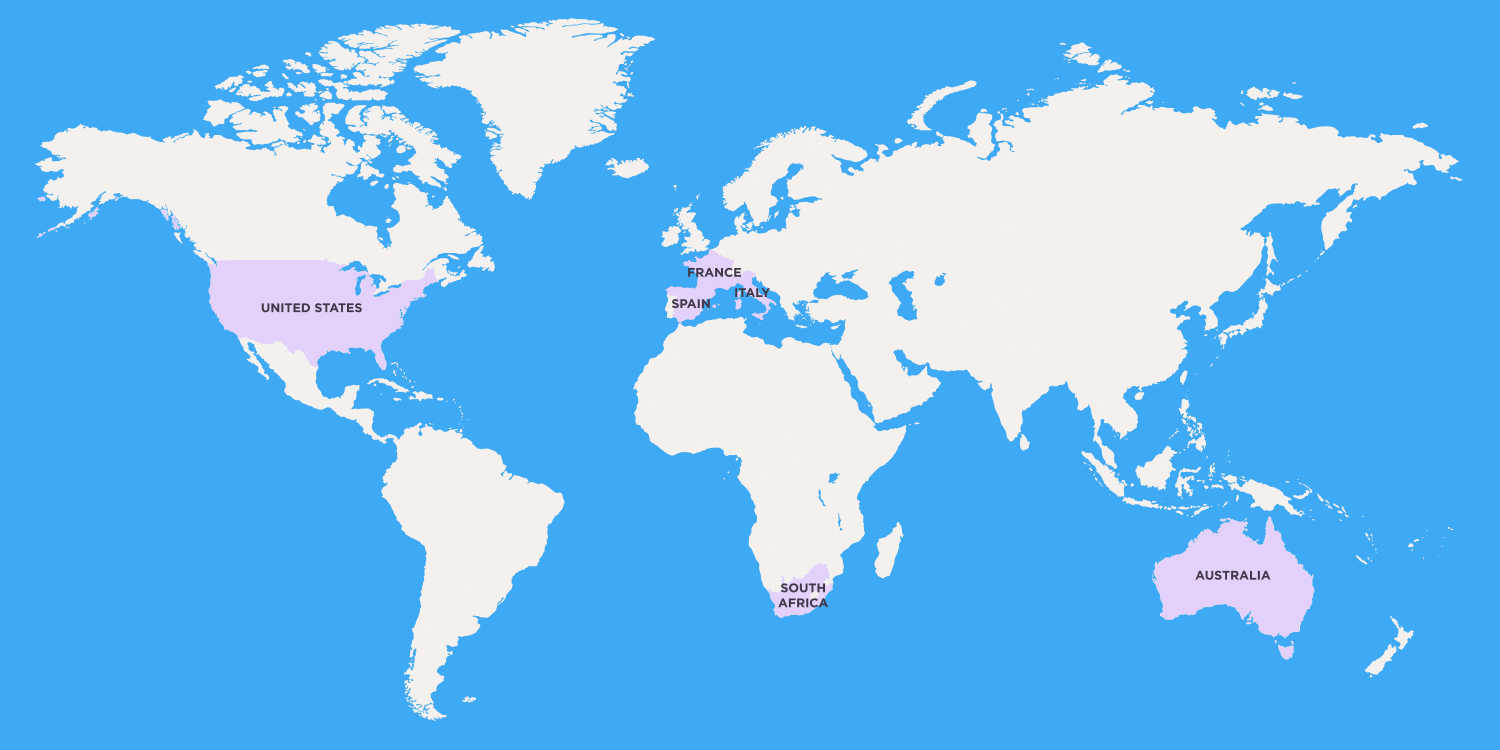Grenache
Grenache is a red grape variety that makes some of the world's most delicious and ageworthy wines
Grenache is a red grape variety that makes some of the world's most delicious and ageworthy wines, both in blends and as a single varietal. Although it's not as well-known as Cabernet Sauvignon or Pinot Noir, it's very likely that you've had a Grenache-based wine without realizing it.
Grenache is perhaps best known as the grape that leads the blends in Châteauneuf-du-Pape reds, the most important appellation in the southern portion of France's Rhône Valley. However, it is also widely grown in Spain, where it is believed to have originated, but here it's called Garnacha. It's most prominent in Priorat, and is an important secondary grape in other Spanish appellations. Grenache has a third name: Cannonau, which is what it's known as on the Italian Island of Sardinia.
As a blend, Grenache is most often married with Syrah and Mourvèdre, a typical Rhône blend that has been emulated worldwide, including in many New World wine-producing regions. In some, the grape has also gained traction in single-variety bottlings.

Take Our Quiz Today
Get award-winning delicious wines from all over the world shipped straight to your door. Take the quiz to get the perfect pairings for your holiday season.
Take The Quiz TodayIN THIS ARTICLE:
History of Grenache
The most likely origin story for Grenache is the one that claims Spain as its birthplace. Here, Garnacha grew first in the Aragón region in the north of the country, and then spread to southern France and the Roussillon area—probably because it was part of the Kingdom of Aragón from the 1200s to the 1600s. It later took root in the Southern Rhône, where it remains a pillar of red wines to this day.
There's an alternative theory. Sardinians say Garnacha—known there as Cannonau—originated on their island, which was also under Kingdom of Aragón rule for several centuries, and only later spread to Spain and then France.
In the late 20th century, Grenache was actually the second most widely planted variety in the world, but acreage declined in the 21st century. Today, it is still very important in Spain, France, and Sardinia, and has spread to New World regions like California, Australia, and South Africa.
There are several variations of the Grenache grape found in vineyards these days, including Garnacha Tinta, Garnacha Tintorera and Garnacha Peluda (also known as Lladoner Pelut). Alicante is another synonym.
What does Grenache taste like?
Grenache can vary in style depending on where it's grown, which winemaker produced it, and whether or not it's blended with other varieties. It is generally low to medium in acidity, and under certain circumstances (such as low yields at harvest) has the potential for pronounced tannins. Some winemakers, however, choose to control this, so you will also find Grenache wines that are relatively low in tannins.
Grenache's flavor profile is dominated by sweet black and red fruit, such as raspberry, cherry and blackberry. This is complemented by spice, dried herbs, earth and licorice. Grenache grapes have a proclivity toward high sugar on the vine, which results in high levels of alcohol.
Generally speaking, Grenache from France will be more medium-bodied and highlight herbal and earthy details a little more, whereas Garnacha from Spain can be more extracted and fruit-forward.
Grenache Characteristics
Grenache is a late-ripening grape with thin skins that loves warm weather and sunshine. This is why it's cozily at home in Mediterranean wine regions, as well as in the hot spots of California and Australia. You can find it basking in a variety of soils, such as gravel, clay, limestone and sand. In Châteauneuf-du-Pape, Grenache's most important home, vineyards are peppered with galets, large white stones that store heat.
In the vineyard, Grenache is a strong grape that is resistant to pressures like wind and drought, although it can be affected by coulure. Grenache vines are often cultivated as a standalone bush, as opposed to the connected rows you typically associate with vineyards. Some of the best Grenache is made from old vines, like in Châteauneuf-du-Pape and Priorat.
You might hear Grenache referred to as Grenache Noir. This is because there is also a Grenache Blanc, which is a white grape that is also common in southern France and Spain. It makes noteworthy white wines, most often in blends.
Fun Fact
Before AOC laws tightened, other regions in France such as Burgundy would use Grenache to add color and concentration to their red wines.
Grenache Nutritional Facts
The nutritional value of Grenache varies depending on two factors: alcohol and sugar. As discussed earlier, Grenache has both high alcohol and high sugar, meaning you could ingest more calories from this red wine grape than another wine lower in alcohol. The more sugar there is in a wine, the more carbohydrates will be present.
How to Serve and Store Grenache
While some Grenache wines are made in easy-drinking, quaffable styles that you can drink very shortly after bottling, most have the structure that will benefit from short- to long-term aging. For some bottles, it might just be a couple years for an optimal drinking experience, but if you're dealing with the cream of the crop of Grenache, you can leave them for years and sometimes decades. This also depends on personal preference: Some people like the fruitiness and vibrancy of young reds, while others want to wait for the non-fruit, earthy components to come out, and the tannins to mellow.
However long you cellar Grenache, make sure it is lying on its side so the cork doesn't dry out. You want to keep it in a cool, relatively dry and dark room. It shouldn't be as cold as your fridge, but it should be a place where you can stand to be in for just a few minutes before getting chilly.
Like most red wines, you want to serve Grenache at a temperature between 60 and 70 degrees Fahrenheit. Again, this is a question of personal preference. Letting your wine come to room temperature after it's been taken out of the cellar is probably the sweet spot. Some people like it a tad cooler, but don't let it get too cold, as the tannins will be harsh and the fruit muted.
What to Pair with Grenache
Obey the cardinal rule of great food pairings: Match the weight of the dish with the weight of the wine. Grenache goes particularly well with grilled or roasted meats. If you have a full-bodied Grenache ready to pop, you might want to eat beef, like a well-seasoned steak. If you have a more elegant, medium-bodied Grenache, perhaps lamb would be better, or even some gamier poultry, like duck or squab. Tomato-based sauces are better than those that rely on cream, but that being said, if you like it, pair it!
Grenache Wine Regions Around the World
Grenache, while traditionally a blend in Old World countries, has made a name for itself for varietal wines in New World ones. Here's your guide to the main places Grenache grows in, and what to expect from each.
France:
As mentioned a few times now, Châteauneuf-du-Pape in the Southern Rhône is simply the most well-regarded place for high-quality Grenache. It is included in the medley of 13 grape varieties that can be thrown into the appellation's wines. More often than not, it is the most important component of the blend. These wines are generally full-bodied and concentrated, showing ripe fruit that is complemented by herbal, floral, earth and spice elements. Some producers opt for a more elegant style that is lighter in body and brings out more mineral aromas.
Outside Châteauneuf, Grenache is planted all over the Southern Rhône. Gigondas is the source of very serious, ageworthy wines too. Vacqueyras, Rasteau and Beaumes de Venise are also notable, as is Côtes du Rhône, a catchall appellation for various areas in the Rhône Valley and a go-to for great-value reds from the region. Grenache is also the main grape in Tavel, an appellation that makes concentrated, dark pink rosés.
Elsewhere in France, Languedoc-Roussillon grows a lot of Grenache, including for sweet fortified wines like Banyuls and Maury. The grape is also a reliable blending partner to Mourvèdre in Provence, both for its reds and rosés.
Spain:
Garnacha is at its pinnacle in the Priorat appellation in northern Spain, where it is often blended with Carignan (also known as Cariñena). The vines grow in stony soils unique to the area called llicorella. These wines are concentrated and quite tannic, with ripe black fruit, mineral and licorice flavors.
Other Spanish regions rely heavily on Garnacha. It is a key blending grape with Tempranillo in top-notch regions like Rioja and Ribera del Duero. It is also found in lesser-known appellations like Calatayud, Navarra and Cariñena.
Italy:
Cannonau—one of Grenache's synonyms—is exclusively found on the Italian island of Sardinia, most often labeled as Cannonau di Sardegna. These reds are full-bodied and fruity, showing a range of black and red fruit.
United States:
Many regions in California have emulated the Rhône's signature blend of Grenache, Syrah and Mourvèdre—colloquially known as GSM. Most Grenache-producing AVAs are located in the Central Coast, such as Paso Robles, Santa Barbara, Napa Valley and Sonoma Valley. California Rhône styles tend to be ripe, fruit-forward and spicy.
Fun Fact
Tablas Creek, a pioneering California winery in Paso Robles, is responsible for most of the Grenache cuttings planted in the state today.
Other regions:
Australia makes GSM blends—with Shiraz, which is what the Aussies call Syrah—as well as single-variety Grenache bottlings, some hailing from the country's old vines. Barossa Valley, a subregion in the state of South Australia, is a top source for these wines.
South Africa, which is known for its world-class Syrahs (called Shiraz here too), also produces GSM blends.
Other regions making Grenache include places as far-flung as Mexico, Israel and China.

Take The Quiz
Learning about different wine varietals and regions is fun. Take the quiz now to explore wines matched to your unique palate.
Take The QuizIN THIS ARTICLE

WinePrint™ by Firstleaf
Are you looking to learn more about your wine preferences? Check out our Wine Print for an in-depth look at your personal tasting profile. Discover your favorite wines, varietals, regions, and tasting notes and get personalized recommendations wherever you are.
Learn More
